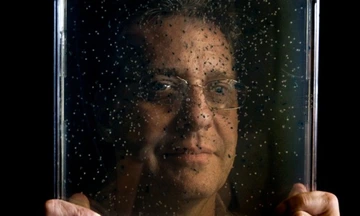100 days of science: Gene researcher strives to create super-rice that will feed billions

Rod Wing, director of the Arizona Genomics Institute, holds a petri plate of E. coli clones containing corn DNA. His lab is leading a project to sequence genes of wild rice.
The Arizona Daily Star's Centennial salute to science in Arizona runs all summer. Each day, for 100 days, we'll record a milestone in the state's scientific history.
Rod Wing, director of the Arizona Genomics Institute, said he likes to "surprise people" by telling them the University of Arizona is the largest producer of rice in the state.
The rice grows in experimental plots in the greenhouses and fields of the UA's College of Agriculture and Life Sciences - an outgrowth of research in Wing's lab to help solve the Earth's looming food crisis by creating new strains of the cereal crops that make up 60 percent of humankind's diet.
Wing started his genomics lab in the buildings of the Bio5 Institute when he joined the UA's School of Plant Sciences in 2002. He was already involved in a worldwide effort to sequence the entire genome of the predominant species of rice.
That $200 million effort took six years and in 2004 produced the first complete genome sequence for a food crop.
Now Wing's lab is leading a project to sequence the 21 wild relatives of the two cultivated rice species.
"The main reason for doing this project is to solve the '9 billion people' question," said Wing. "How are we going to feed the 9 billion people who are going to be on this planet in less than 40 years?"
"The main goal of the rice community is to create a 'green' super-rice with less environmental impact, using less fertilizer, less pesticide, less chemicals, less water that can grow on more marginal land but with double or triple the yield."
The UA is not just sequencing rice, but working with researchers in China and the Philippines to grow new strains.
On StarNet: Covering topics from the cosmos to the invisible world of nanotechnology: the Scientific Bent blog at azstarnet.com/ scientificbent
Sources: Rod Wing; Arizona Daily Star archives

